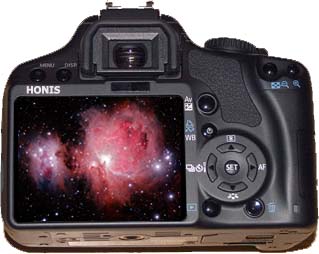

Test results of the anti-aliasing properties of the original filters in Canon DSLR cameras:
Prompted by discussions with Jerry Lodriguss, I have been testing the effect of the anti-aliasing properties of Canon's original filters (LPF#1 and LPF#2) in front of the CMOS imaging sensors of recent model cameras. I had been made aware by one filter manufacturer who has done extensive testing, that the anti-aliasing property was disabled with removal of the second original filter (LPF#2), despite many reports that LPF#1 is the anti-aliasing filter. Of special interest for planetary imaging is the effect of the anti-aliasing filter on capturing fine detail in planet images.
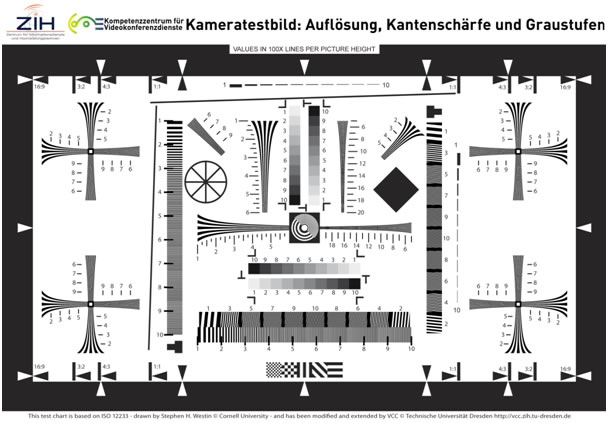 For my
initial tests, I used a test chart by ZIH that can be found here.
For this test I used the same Canon 450D (XSi) before modification
and after a Full Spectrum Modification. For the Full Spectrum
modification both original filters (LPF#1 and LPF#2) were replaced
with an Astronomik multi-coated and optically polished clear glass
DSLR replacement by Astronomik. The transmission curve for the
Astronomik MC clear glass can be seen here.
In addition, in order to block infrared wavelengths and correct
the color balance, an Astronomik Original White Balance (OWB)
clip filter was inserted in the body of the Full Spectrum modified
camera.
For my
initial tests, I used a test chart by ZIH that can be found here.
For this test I used the same Canon 450D (XSi) before modification
and after a Full Spectrum Modification. For the Full Spectrum
modification both original filters (LPF#1 and LPF#2) were replaced
with an Astronomik multi-coated and optically polished clear glass
DSLR replacement by Astronomik. The transmission curve for the
Astronomik MC clear glass can be seen here.
In addition, in order to block infrared wavelengths and correct
the color balance, an Astronomik Original White Balance (OWB)
clip filter was inserted in the body of the Full Spectrum modified
camera.
For all test images, the 450D camera was mounted on a tripod six feet from the test chart with good lighting. A two second delay before shutter fire was used to avoid vibrations. The camera was set in manual mode for 1/30 second exposure at f8.0 and ISO 100. Liveview was used in 10X mode to achieve best focus using the camera back LCD display.
Lens used was a Canon Zoom Lens EF 70-300mm 1:4-5.6 IS USM at the 300mm setting. Test images were taken both before modification with the stock camera, and after the Full Spectrum modification with OWB clip filter installed. A few images were taken to ensure the best focus was being achieved.
Test #1 - ZIH Test Chart:
Below is an image of the entire FOV captured, centered and focused on the circle at center:
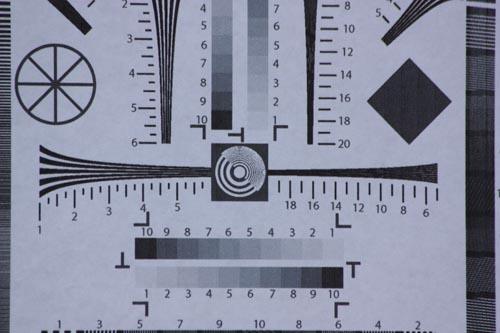
The images were cropped to compare only the very center of the test chart. Below is a GIF animation of the before and after Full Spectrum modification images.
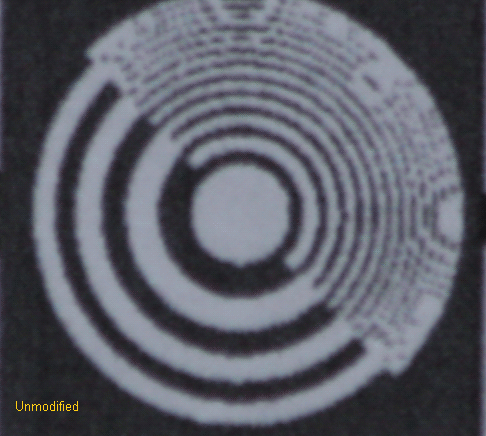
Test #2 - $20 Bill:
Below is an image of the entire FOV captured, centered and focused on Jackon's eye:

The images were cropped to compare only the very center of the bill. Below is a GIF animation of the before and after Full Spectrum modification images.
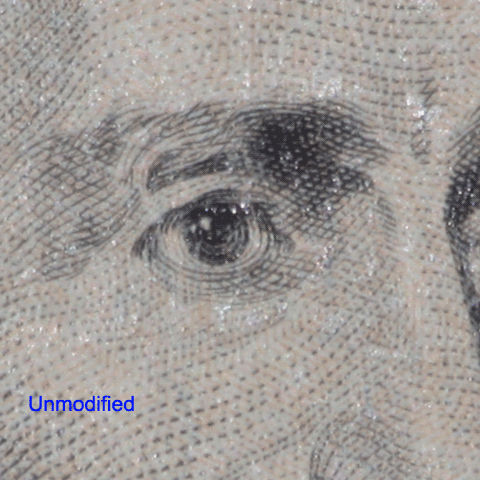
Based on this these initial tests, more detail is captured in the Full Spectrum modified camera, even with the Astronomik OWB clip filter installed to correct color balance.
On the Cloudy Nights group, Eric Yiskis asked about the blurring effect of the anti-aliasing low-pass filter in a non-modified camera and its possible harmful effect on the resolution of planetary images. In order to address that, I tested a Canon T2i (550D) using its movie crop mode (640X480 pixels) that is especially useful for planetary imaging because of its 60 frames per second capture rate. The same test chart and $20 US bill as used for the above still image tests, were used for this video test. The Canon Zoom Lens EF 70-300mm 1:4-5.6 IS USM at the 300mm setting was again used, with the camera in movie crop mode to capture 10 second videos. Liveview was used to achieve best focus using the camera back LCD display.
Test videos were taken both before modification with the stock camera, and after the Full Spectrum modification with an OWB clip filter installed. Duplicate videos were captured to ensure the best focus was being achieved. The captured videos in .MOV format were converted to .AVI file format in order to allow opening in Registax 5. The free software "SUPER" was used for the conversion using the HuffYUV lossless codec. Registax 5 was used with a 256 pixel alignment box size. The only processing done was to greyscale the images and align them using Images Plus.
Test #1 - ZIH Test Chart:
Below is a GIF animation of the before and after Full Spectrum modification stack from Registax 5:
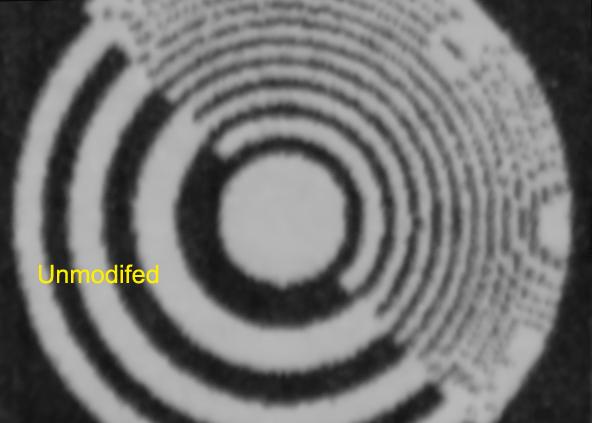
Test #2 - $20 Bill:
Below is a GIF animation of the before and after Full Spectrum modification stack from Registax 5:
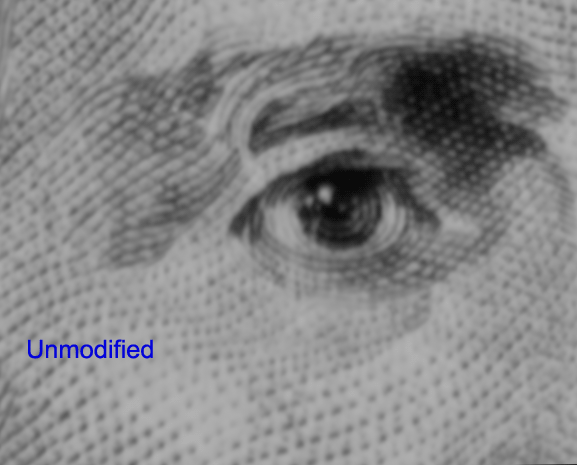
As was found with the earlier single image
results, again more detail is captured in the Full Spectrum modified
camera, even with the Astronomik OWB clip filter installed to
correct color balance.
Note: This is a preliminary test report. Check back for more test results.
To My Astrophotography & Digital Imaging Home Page